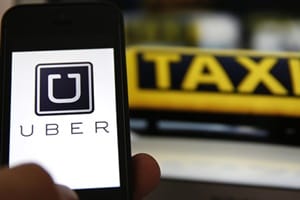In a bid to combat negative feedback on surge pricing, cab hailing service provider Uber, has introduced a new pricing mechanism called upfront fare. The company will continue to charge more during peak hours but instead of surge lightning bolts and pop-up screens, riders will be told the actual fare before they request their rides. In the last few months both Uber and Ola have been directed by state governments including Delhi and Karnataka to stop surge pricing. In a letter to Delhi’s transport commissioner, the company said that its taxis charge a per-kilometre fare which does not exceed the government-prescribed rate. Prabhjeet Singh, head, strategy and planning, Uber India in an interview with FE’s Anushree Bhattacharyya talks about competition, and how price is not the only factor which drives the business. Excerpts:
How is ‘upfront pricing’ any different from surge pricing?
The goal of upfront pricing is to make pricing simpler and clearer while giving riders more control and certainty. There’s no math and no surprises. When you book a plane ticket or hotel room you know the price before you buy it. We think that’s the right approach for Uber.
Also Read: How to prepare for $ 100-oil
Is price the only factor keeping the business afloat?
We will continue to innovate and introduce transportation options everywhere, for everyone. However, price is not the only factor we compete on. We continue to focus on providing superior trip experience – right from booking the ride, to the on-trip experience and post-trip interactions.
What about competition?
Competition is always good for consumers. We are confident of the superior quality of our product which has been tried and tested by millions of riders and driver-partners across the globe. All the knowledge and data harvested by this extensive network helps us build a better product and even better consumer experience – that’s our priority.
Drivers no longer work exclusively with one platform. How do you build loyalty?
We do not force our drivers to work on our platform only. They’re open to switch on and switch off the app and work on our platform as per their convenience. However, our research indicates that drivers who once experience Uber tend to prefer our platform.
What are the changes Uber has made in its services in India?
India is one of Uber’s top global market priorities. The quick adaption and the robust growth has been encouraging. We’ve led a lot of innovations at Uber, from here in India. For example, cash as a payment option, uberAUTO, uberGO etc. In order to keep innovating for local cities and countries, we’ve even launched Asia’s first engineering centre in Bangalore and the centre of excellence in Hyderabad.
How will the two centres help in providing a seamless service?
The centre of excellence will house a team of over 500 customer service specialists who will provide 24/7 assistance to both riders and driver partners. Uber has already hired close to 30% of the total team strength and has started support operations. The engineering centre in Bangalore will hire software engineers who will focus on developing customised solutions in collaboration with on-the-ground operations teams as well as global engineering and product teams.
What kind of role do you see Uber playing in India?
While we have scaled up exponentially, we still account for a small per cent of total trips in the cities we operate in. Our competition is not other aggregators but private car ownership. We want to be seen as a real alternative to a world that looks like a parking lot and moves like a traffic jam.


